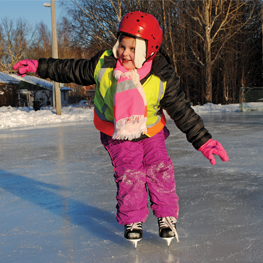
In July 2018, the Canadian Institute for Health Information released alarming facts highlighting that the incidences of sport-related brain injuries are on the rise, with the highest increase being in the 0 to 9 year age bracket.
The statistics, comprised of data from both Alberta and Ontario, state that over 17,000 sport-related brain injuries were seen in emergency departments in Alberta and Ontario in 2016 to 2017:
What can you do to prevent your child from being part of these statistics as they take part in winter activities?
Make sure all of their equipment fits properly. This includes both footwear (winter boots, ski boots, skates, etc.) and headgear. Tips on how to choose the right helmet and ensure a proper fit can be found at skicanada.org. It’s important to note that helmets are not universal so for optimal protection, you’ll want to have the proper helmet for the right sport (i.e., a cycling helmet is not an effective measure of protection when skiing).
Enroll your child in age-appropriate group or one-on-one lessons so they can master the right technique (skiing, skating, snowboarding, snowmobiling, etc.).
Helmets are not just for skiing or skating! Put a lid on it whenever there is potential risk of a fall (i.e., sledding).
Always take notice of any potential dangers whenever your child is taking part in winter sports and adjust as needed (i.e., If sledding, assess the landscape to ensure there are no tree stumps or other obstacles on the pathway that could cause a crash).
Establish a buddy system with one or more of your child’s friends and have them look out for one another. Children younger than eight years old should always be well supervised outside.
Sports and recreational activities are an important part of a child’s life as both promote health and well-being. These activities help in establishing great life skills (team work, a sense of unity, relationship-building, work ethic, etc.) all while participants are having fun being mentally and physically challenged. That said, it comes without saying that you need to be on the lookout for how your child can participate safely when taking part in all sports. Paediatricians in Canada have teamed up to provide resources on how you can do just that, caringforkids.cps.ca/handouts/winter_safety.
Denise is a Human Resources professional and author who, as a brain injury survivor, now advocates for injury prevention. She’s authored Emma’s Skiing Adventure, a children’s book where readers can follow Emma’s journey as she shares
the important message of being safe on the slopes. For more information, visit denise-pelletier.com and follow her on Twitter @dpelletier03.
Calgary’s Child Magazine © 2024 Calgary’s Child